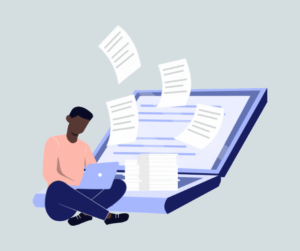 Recently, a bilingual teacher in my Dyslexia for Teachers class shared his experiences being a dyslexic writing in both English and Chinese. With his permission, I am sharing some of his reflections:
Recently, a bilingual teacher in my Dyslexia for Teachers class shared his experiences being a dyslexic writing in both English and Chinese. With his permission, I am sharing some of his reflections:
“Under an educational system that attaches great importance to writing abilities, I have been subjected to countless criticisms and reproaches. I should have given up or avoided writing early on, but for a community college teacher who encouraged me, saying that my articles were imaginative and beautiful. That’s why I was determined to continue to study and write.” — Jason
Jason’s post:
“I love writing a lot, but it is always tricky for me. I used to have too many ideas and didn’t know how to start.
Retrieving words and spelling are always in trouble when I try to write, and there are often a lot of spelling mistakes and wrong choices of words. Grammar also often deviates, words often do not convey the meaning, and even the entire text or sentence is unreasonable or cannot express what I want.
My native language is hieroglyphs, and I use the wrong homonyms often when writing. What annoys me the most, and I don’t know how to solve it, is that even though I have reviewed it several times, I can’t speak out about these mistakes.
Dysgraphia and finger confusion are the biggest obstacle to me. It’s not just that the calligraphy is ugly. When I was a child, I often turned left, right, or upside down. For example, ‘b’ be come ‘p’ or ‘d’, spell first into ‘frist’. Even now, I often feel that my hands and fingers are out of control, and even though there are images of words in my head, I can’t always write them out clearly or completely.
Also, because I didn’t use the muscles of my hand properly when writing, my right hand suffered from strain, whether it was the wrist, arm, or even the head. I had a lot of pain in college because of the heavy writing requirements. It would affect my neck and back pain in severe cases simultaneously.
Of course, these problems are not difficult to solve with the help of many digital tools and technology. For example, Grammarly improves the expression of the article and helps proofread where it goes wrong. It can also help students learn and correct at the same time. Sometimes, using the keyboard may not help students with dyslexia fully. On the contrary, the recent speech-to-text technology is relatively mature and can help solve problems more effectively.”
Jason also shared his visual strategy for writing that helped him in college:
“Translating my feelings into words is always a challenge for me. Somehow when I was in college, I developed a method that included a storyboard, skeleton story, and sentence combining and expansion to help me write a novel in modern history class.
Step 1:
Create a table with a timeline, characters’ relationships, starting events, ideas for the ending, and the message you want to pass as a story’s skeleton. In a historical novel, put characters into the timeline and match them to the historical events.
Step 2:
Write down ideas as short sentences or in bullet point form.
Step 3:
Draw simple pictures for scenes, the write short sentences to expand descriptions.
Using toys as characters can help you re-create scenes dialogue between characters. By the end, combine all the sentences into paragraphs.
This method allows me to write down all my ideas quickly and dispense with excessive and incompatible details.
Having the finish one scene before writing another and following a timeline, allow the writing to expand step-by-step.
Taking on different roles is fun and helps me discover new insights. Sentence combining and expansion can also be playful and fun. Different combinations can be made with stickie notes on a board. As a group activity, many ideas can come from it and it can be fascinating.”
Jason also had these helpful insights on grammar:
“Today, without the help of proofreading, I still have a lot of grammatical errors, and my major errors are the tense, articles, punctuation, and sentence structure. I used to mix up ‘have,’ ‘has, and ‘had’ but never knew the right time to use it. Or when I can use ‘ing’ instead of use ‘to’. When should I use ‘;’ and not a ‘.’ .
It is only partly helpful to understand the grammar if pictures on the grammar worksheet illustrate the situation. One teacher once taught me to add subtitles by watching TV programs, especially news reports, and slowly absorb them through continuous listening and watching. This method is more effective for me, and most of my grammar is also learned this way.
By using Grammarly, I can find out my mistake and slowly improve. However, it takes a lot of time and shows. I love to find out if there is any way I can learn grammar more fun and precise. ”
Thanks Jason for sharing these wonderful reflections and suggestions!














